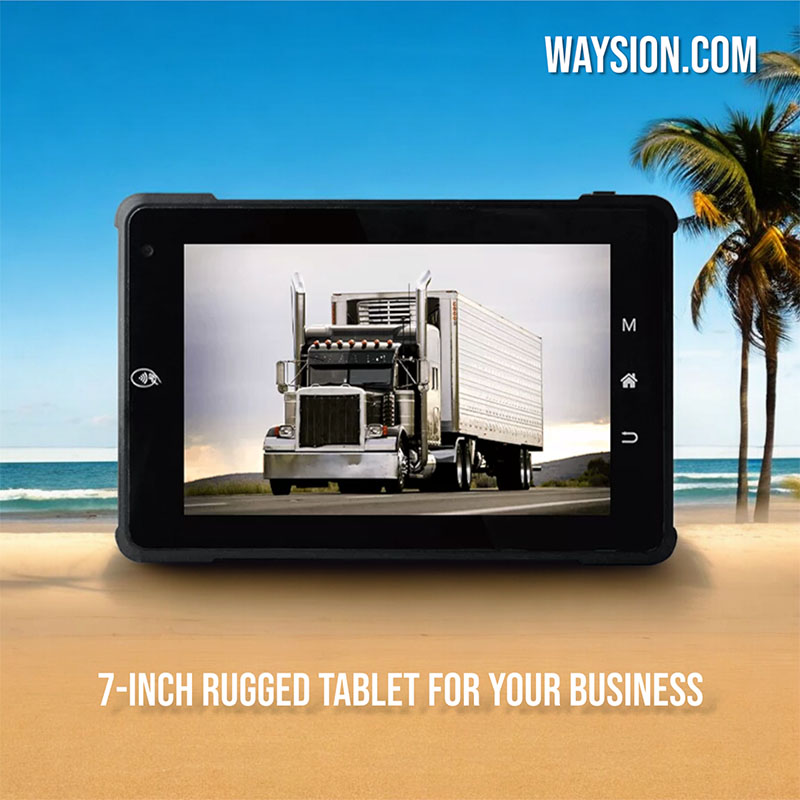How to Choose a Rugged Android Tablet for Your Business
In today’s fast-paced business environment, mobility and connectivity are crucial for success. A rugged android tablet can be a game-changer for businesses that require reliable and durable devices for field operations, inventory management, or customer service. But with so many options on the market, choosing the right rugged tablet can be a daunting task. This article will guide you through the essential factors to consider when selecting a rugged android tablet for your business, ensuring you make an informed decision that meets your specific needs.
Understanding Rugged Tablets
What is a Rugged Tablet?
A rugged tablet is designed to withstand harsh conditions and heavy use, making it ideal for industries such as construction, logistics, manufacturing, and field services. These tablets are built to be resistant to dust, water, drops, and extreme temperatures, ensuring they can operate reliably in various environments.
Why Choose an Android Tablet?
Android tablets offer a wide range of advantages for business use:
- Customizability: Android’s open-source nature allows for customization, which can be tailored to specific business needs.
- App Ecosystem: Android has a vast app ecosystem, providing access to a multitude of business applications.
- Cost-Effectiveness: Android tablets are generally more affordable than their iOS counterparts, making them a cost-effective solution for businesses.
- Compatibility: Android’s compatibility with various devices and systems makes integration with existing business infrastructure seamless.
Key Factors to Consider
Durability and Build Quality
The primary reason for choosing a rugged tablet is its ability to withstand tough conditions. Look for tablets with certifications such as IP (Ingress Protection) ratings for dust and water resistance, and MIL-STD-810G for drop and shock resistance.
Display and Visibility
A high-quality display is essential for readability in various lighting conditions. Opt for tablets with high brightness levels, sunlight-readable screens, and anti-glare technology.
Performance and Processing Power
The tablet should have sufficient processing power and memory to handle business applications smoothly. Consider the processor speed, RAM, and storage capacity when making your choice.
Battery Life
Long battery life is crucial for field operations. Look for tablets with large-capacity batteries and fast-charging capabilities to minimize downtime.
Connectivity Options
Rugged tablets should offer multiple connectivity options, including Wi-Fi, Bluetooth, GPS, and 4G/5G. This ensures that your team can stay connected regardless of their location.
Operating System and Software
Ensure the tablet runs on a recent version of Android and has a long-term support commitment from the manufacturer for updates and security patches.
Expansion and Customization
Consider the tablet’s ability to be customized or expanded with additional hardware such as barcode scanners, RFID readers, or additional batteries.
Ergonomics and Portability
The tablet should be comfortable to hold and use for extended periods. Look for lightweight designs with ergonomic features.
Price and ROI
Finally, consider the cost of the tablet and its return on investment. A higher initial cost may be justified by long-term durability and reduced maintenance costs.
The Selection Process
Define Your Needs
Before you start shopping, define your business needs. What will the tablet be used for? Will it be used outdoors, in a warehouse, or in a vehicle? Understanding your needs will help you narrow down your options.
Research and Compare
Once you have a clear idea of your requirements, research different models that meet these criteria. Compare their features, durability, performance, and price.
Consult with Experts
If possible, consult with industry experts or other businesses that have used rugged tablets. Their insights can provide valuable information on real-world performance and reliability.
Test and Evaluate
If possible, test the tablets in conditions similar to those they will be used in. This hands-on experience will give you a better understanding of their performance and usability.
Consider the Total Cost of Ownership
Don’t just look at the purchase price; consider the total cost of ownership, including maintenance, repairs, and replacement costs over the tablet’s lifespan.

Case Studies and Examples
Real-World Applications
Let’s look at a few real-world examples of businesses that have successfully implemented rugged Android tablets:
- Field Service Companies: A field service company used rugged tablets for on-site inspections and repairs, reducing paperwork and increasing efficiency.
- Logistics and Warehousing: A logistics company implemented rugged tablets for inventory management, improving accuracy and reducing theft.
- Retail and Hospitality: A hotel chain used rugged tablets for guest check-ins and room service orders, enhancing the guest experience.
Success Stories
- Increased Productivity: Businesses have reported increased productivity due to the mobility and reliability of rugged tablets.
- Cost Savings: By reducing the need for paper and improving data accuracy, companies have saved on operational costs.
- Improved Customer Service: In industries like retail and hospitality, rugged tablets have improved customer service by providing quick access to information and services.
Conclusion
Choosing the right rugged android tablet for your business is a critical decision that can significantly impact your operations. By considering factors such as durability, performance, and cost, and by following a structured selection process, you can find a tablet that meets your specific needs. Remember, the investment in a rugged tablet is not just about the device itself but about the improvements in efficiency, productivity, and customer satisfaction it can bring to your business.
Final Thoughts
In conclusion, the selection of a rugged android tablet should be a well-thought-out process that aligns with your business goals and operational requirements. By focusing on the key factors discussed in this article, you can make an informed decision that will serve your business well in the long run. As you embark on this journey, remember that the right choice can be the difference between a smooth operation and a costly mistake.










